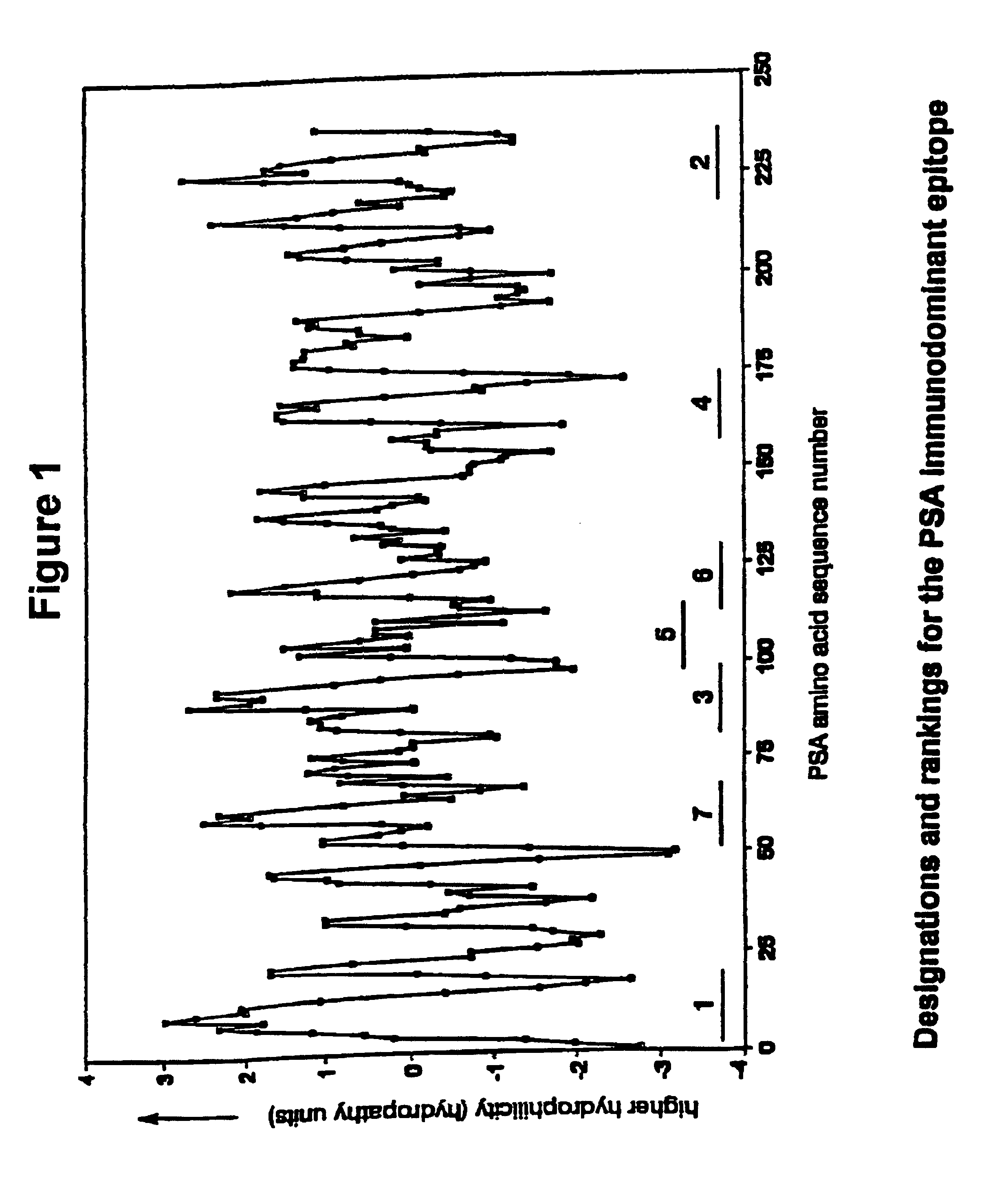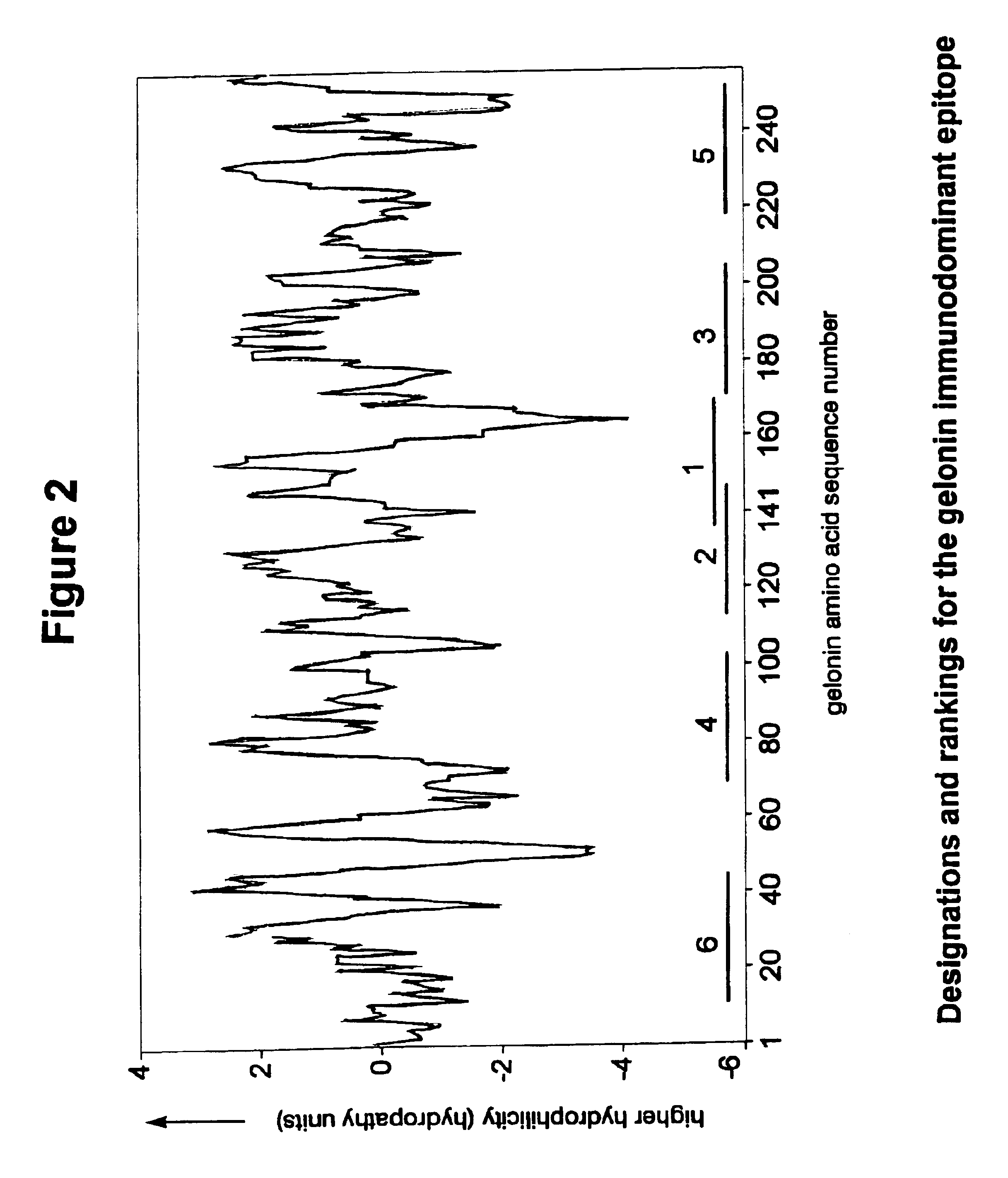Method of identifying and locating immunobiologically-active linear peptides
a linear peptide, immunobiologically active technology, applied in the direction of peptide sources, instruments, antibody medical ingredients, etc., can solve the problems of not providing any information as to the optimal length of the continuous epitope, not predicting the optimal length of the epitope or indicating
- Summary
- Abstract
- Description
- Claims
- Application Information
AI Technical Summary
Benefits of technology
Problems solved by technology
Method used
Image
Examples
example 2
Determination of Hydrophobic-Hydrophilic-Hydrophobic Regions
The negative cosine curve function of a specific period number was fitted with custom software using the source code disclosed in Appendix A to successive segments of the PSA and gelonin Kyte-Doolittle hydropathy curve. Each point along the hydropathy curve obtained in Example 1 was fitted to a negative cosine curve function from -180.degree. to +180.degree.. The period number of the negative cosine curve function was changed from 8 to 40 producing a series of 33 potential Ho-Hi-Ho epitope sets. A fit-correlation value was obtained for each lag point l along the amino acid sequence in each chosen period number m. Number ranges having a positive-fit correlation value represented hydrophobic-hydrophilic-hydrophobic regions in the amino acid sequences and these sequences are deemed ranked theoretical epitopes. The period number m of the negative cosine curve function represented the size of the hydrophobic-hydrophilic-hydropho...
example 3
Oscillating Behavior of Ranked Potential Epitope
The Ho-Hi-Ho potential epitopes in each set were determined and ranked according to the positivity of the correlation between the hydrophilicity curve and a curve generated by the negative cosine function wherein the period numbers m=8-40 were used.
The ranked potential epitopes for each set were juxtaposed on the hydrophilicity plot so that the sequence of amino acid residues in the ranked theoretical epitopes corresponded to the linear sequence of the polypeptides of PSA and Gelonin. Thus understood, the amino acid sequence of each ranked Ho-Hi-Ho potential epitope had a specific location corresponding to the placement of the same amino acid sequence found in the polypeptide.
Each of the 33 sets of potential epitopes for PSA and gelonin, which contained the ranked Ho-Hi-Ho potential epitopes, were plotted on the generated hydrophilicity curve thereby providing 33 different plots for each polypeptide. It was discovered in reviewing the ...
PUM
| Property | Measurement | Unit |
|---|---|---|
| hydrophobic-hydrophilic-hydrophobic | aaaaa | aaaaa |
| hydrophilicity | aaaaa | aaaaa |
| hydrophilicity plot | aaaaa | aaaaa |
Abstract
Description
Claims
Application Information
 Login to View More
Login to View More - R&D
- Intellectual Property
- Life Sciences
- Materials
- Tech Scout
- Unparalleled Data Quality
- Higher Quality Content
- 60% Fewer Hallucinations
Browse by: Latest US Patents, China's latest patents, Technical Efficacy Thesaurus, Application Domain, Technology Topic, Popular Technical Reports.
© 2025 PatSnap. All rights reserved.Legal|Privacy policy|Modern Slavery Act Transparency Statement|Sitemap|About US| Contact US: help@patsnap.com



